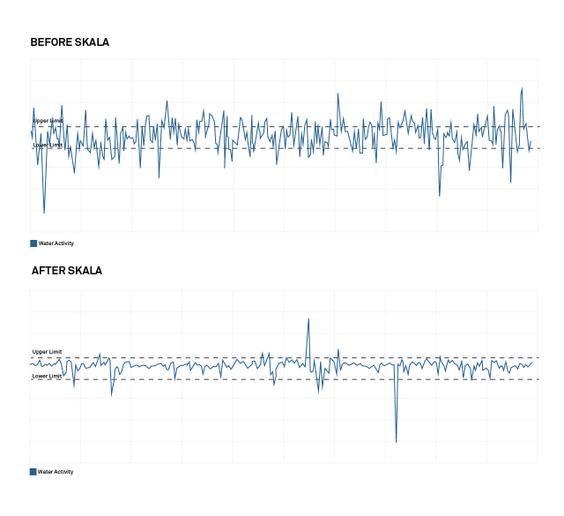Webinar
Solving the Challenge of a High-Turnover, Low Engagement Workforce: 5 Ways Data Helps You Deliver Results

Susan Newman shares insights gleaned from countless process control measurement system installations — from keeping teams in sync to ensuring techs stay motivated.
A challenge in the food manufacturing industry is the high employee turnover rate and low engagement in the workforce. This webinar addresses those concerns and provides five ways that data can help you deliver results. This presentation results from years of client visits, direct observations, and hundreds of interviews with employees.
Needs of Food Manufacturers and Employees
Food manufacturers have three primary wants: safety, profitability, and customer satisfaction. Safety involves adherence to regulatory standards and sound manufacturing processing, while profitability includes everything from smart resourcing to waste reduction and enhanced productivity through continuous improvement. Customer satisfaction is essential because happy customers are loyal customers.
The needs of a non-skilled manufacturing employee, on the other hand, are markedly different. Their concerns are making a livable wage and performing work they can be proud of. A livable wage directly impacts turnover, burnout, and underappreciation. In addition, both skilled and non-skilled employees want to take pride in their work and have their value quantified.

Food Process Control
Food process control looks like it should be simple: standard operating procedures; consistent ingredients that match incoming certificates of analysis; refined recipes; calibrated, validated, and optimized equipment should all create circumstances to succeed. However, the variable hardest to anticipate in food process control is people. When we change the way we manage people, we change the effectiveness and productivity of the food process control.

1. Define and live by your company culture. A well-defined company culture can make a massive difference in employees' engagement. A defined culture teaches company values to employees, and consistent follow-ups regarding those values keep employers and employees to the same standard. Company culture can bridge the management cap and keep everyone on every level on the same page. Driving company culture allows food companies to openly identify and communicate the aforementioned top-three goals and helps align the company goals with those of the employees.
2. Engage employees. Identify each employee's strengths and allow them to engage in tasks that build on those strengths. This approach increases efficiency, improves work-life and work-life balance, and provides work that employees can take pride in. The best learning happens when we're curious, and both personal and professional questions can allow management to identify the areas of food process control where the employee can excel. Personality and aptitude tests can help employees gain valuable insight into company culture and how to engage employees. Understanding and placing employees where they can succeed demonstrates the value of workers and opens the door for employee involvement in discussions and food process control improvement. Engaged employees are less likely to steal, miss work, and make mistakes. Engaged workers can also see areas of improvement in food process control that seasoned leadership may have overlooked.
3. Create clear, simple roles with meaningful job descriptions. Clear contribution stands communicate to workers what success looks like. Every station in food process control needs clear expectations with no room for interpretation of what is required. The supervisor should be able to quickly identify who is responsible for what processes. Easy verification of completed tasks results in complete clarity and better adherence to the food process control.
4. Establish a method to extract neutral data. This action step is not as easy as it sounds. Data from food process control can be easily influenced or manipulated. Food process control is about data, collecting data, and making meaningful decisions from that data to increase profitability, minimize rework, optimize quality, and maximize moisture in a product. Transitioning to smart technologies that collect and transcribe data without the human element is central to an innovative food process control strategy.
5. Empower people to drive processes. Making guided decisions in food process control adjustments based on neutral data can increase profitability and empower production staff to make adjustments that meet food safety specifications and quality control to protect the brand. The cost of mistakes is far less when employees are empowered to improve their processes.
The best way to ensure data neutrality in food process control is to use technologies that automatically pull data. While spreadsheets can meet the basic needs of data collection and transcription, this method has more opportunities for human error in both collection and transcription. A tool that directly connects to the instrument and uploads data to the cloud is more reliable and neutral.

An example of these principles is illustrated in a company that measures water activity as a critical control point. A consultant came into the food process control and installed measurement hardware on the line, allowing critical data to be collected exactly where workers needed that neutral data. In three weeks, employees were empowered to adjust different hardware parameters, increase the baking time and drying time, and keep values in spec. Managing data immediately will show saved money and overall profitability.

